Damascus – Damascus Citadel دمشق – قلعة دمشق
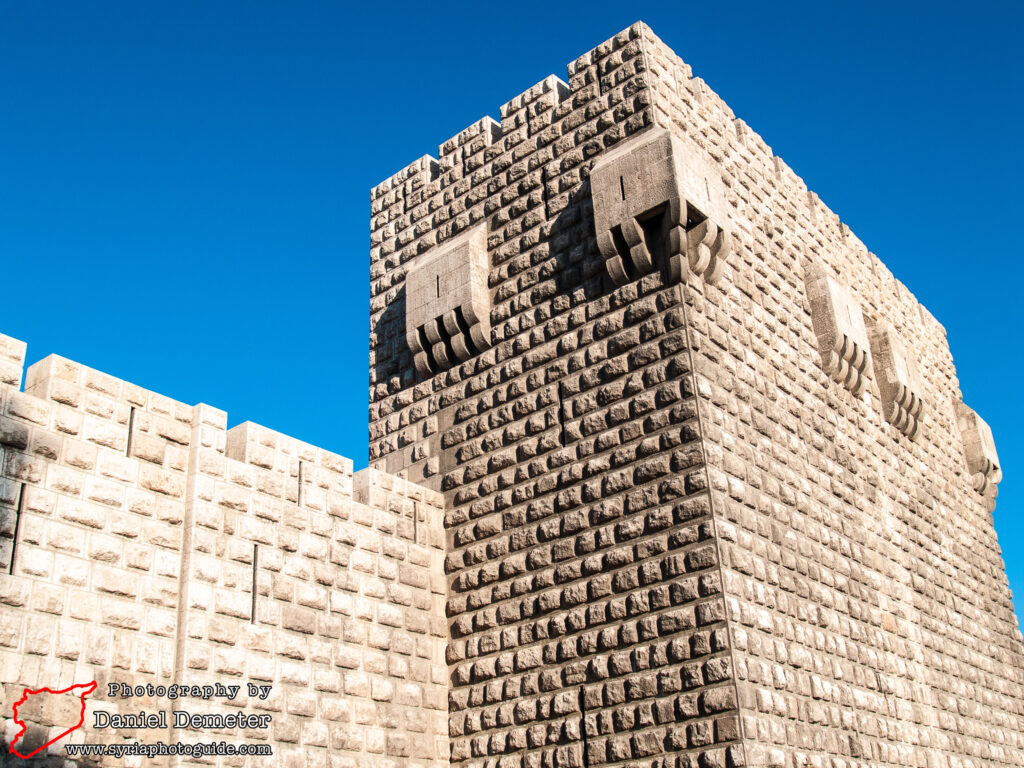
Located in the northwest corner of the old city, the Damascus Citadel (قلعة دمشق) was first fortified under Turkmen warlord Aziz Bin Awaq al-Khawarzami (ازيز بن أوق الخوارزمي) in 1076. It was not completed during his reign, but under subsequent ruler Abu Said Taj al-Dawleh Tatash al-Seljuqi (أبو سعيد تاج الدولة تتش السلجوقي). The citadel was expanded and modified several times in the following centuries, and needed to be restored after numerous sieges by both the Crusaders and rival Muslim armies. After several unsuccessful attempts, Nur al-Din Mahmoud Zenki (نور الدين محمود زنكي) captured Damascus (دمشق) in 1154, taking up residence in the citadel. Significant improvements to the city’s fortifications were undertaken during his rule, as well as restorations after an earthquake in 1170.
Soon after the death of Nur al-Din (نور الدين) in 1174, the city was captured by Salah al-Din Yousef Bin Ayoub (صلاح الدين يوسف بن أيوب). He added a tower to the citadel and restored its residential buildings. After a period of instability subsequent to the death of Salah al-Din (صلاح الدين) in 1193, al-Aadil Seif al-Din Abu Bakr Bin Ayoub (العادل سيف الدين أبو بكر بن أيوب) eventually asserted control over Damascus (دمشق). al-Aadil Seif al-Din (العادل سيف الدين) was responsible for extensive rebuilding of the citadel between 1203 and 1216. This was partially in response to earthquakes in 1200 and 1202, but mostly motivated by the need to adapt to advancements in siege warfare that necessitated reinforced defenses. al-Aadil Seif al-Din (العادل سيف الدين) died in 1218, and the city suffered from a period of instability and power struggles for several decades.
The Mongols conquered Damascus (دمشق) and dismantled much of the city’s defenses in 1260. They were defeated by the Mamluks later that year, and the citadel was rebuilt under al-Zahir Rukn al-Din Baibars al-Bandaqdari (الظاهر ركن الدين بيبرس البندقداري). The citadel was besieged by the Mongols again in 1300, suffering significant damage to its eastern side. Throughout the 14th century, conflict between the rulers of Cairo (Egypt) and Aleppo (حلب) led to several more sieges on the city. Further destruction was inflicted upon the citadel in 1400-1401, when the city was once again besieged by the Mongols. The garrison surrendered after mining brought down the northwestern tower. The citadel’s defenders were massacred and the Umayyad Mosque (الجامع الاموي) was burned. The damage was not repaired until 1407, and further restorations took place in the late 15th and early 16th centuries.
The Ottomans controlled Damascus (دمشق) from much of the 16th century onward, and their infantry occupied the citadel throughout much of this period. While the Ottoman era was characterized by relative stability, occasional conflict between Ottoman troops, governors of the city, and Damascene residents resulted in further damage to the citadel. An earthquake in 1759 caused the western and southern walls to collapse, but the damage was repaired in 1761. In 1860, Christian refugees who had fled from Lebanon to Damascus (دمشق) sought refuge in the citadel after sectarian tensions erupted into massacres against the city’s Christian population. European travelers reported the defenses of the citadel remained in good condition in 1895, but the internal structures were in ruin. The citadel was used as a barracks and prison by Ottoman authorities until the arrival of allied forces towards the end of World War I, and continued to serve that purpose through the French Mandate and until 1986.
The Damascus Citadel (قلعة دمشق) is not nearly as imposing as its counterpart in Aleppo (حلب), built on flat ground with no natural defenses aside from the Barada River (نهر بردى) bordering its northern walls. The citadel has been undergoing restorations throughout the past decade, but most of the interior remains in ruin. The large courtyard is occasionally open to visitors, but a circuit of the external walls gives the best impression of the fortifications. The southwestern tower, at the entrance to Souq al-Hamidiyeh (سوق الحميدية), is perhaps the most remarkable of the twelve surviving towers. The northwestern tower, dated by inscription to 1209, is the largest at 21 meters by 23 meters. The eastern entrance to the citadel, built during the reign of al-Aadil Seif al-Din (العادل سيف الدين), features a gateway decorated with muqarnas leading to an incredible domed hall supported by four massive columns.
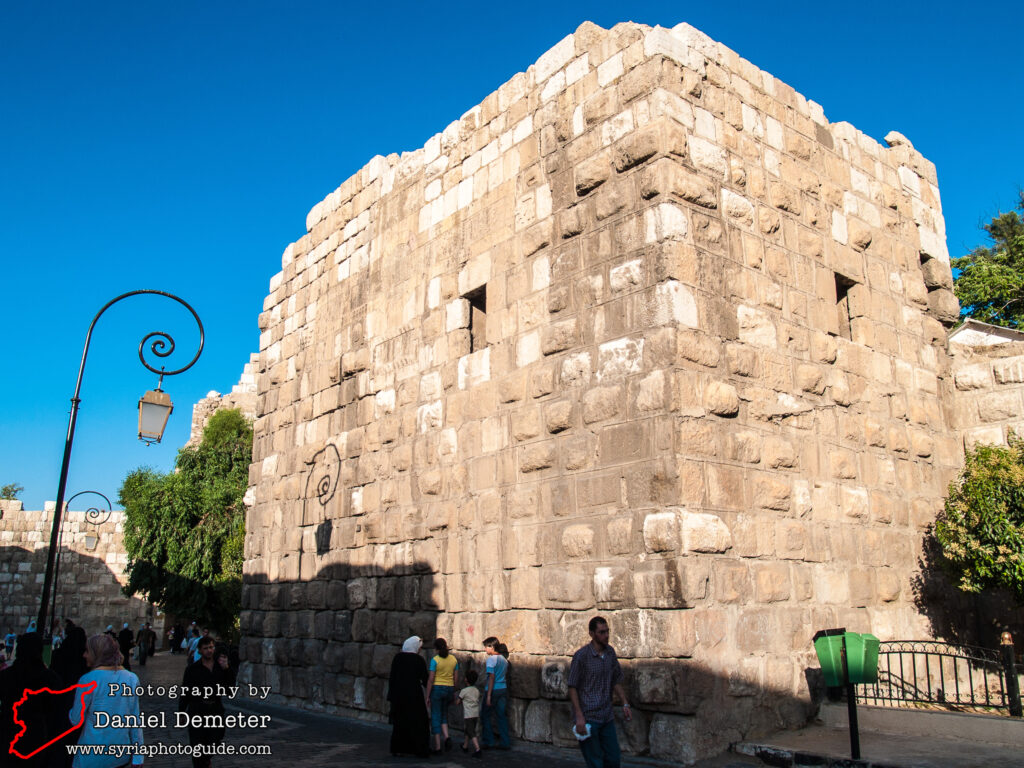
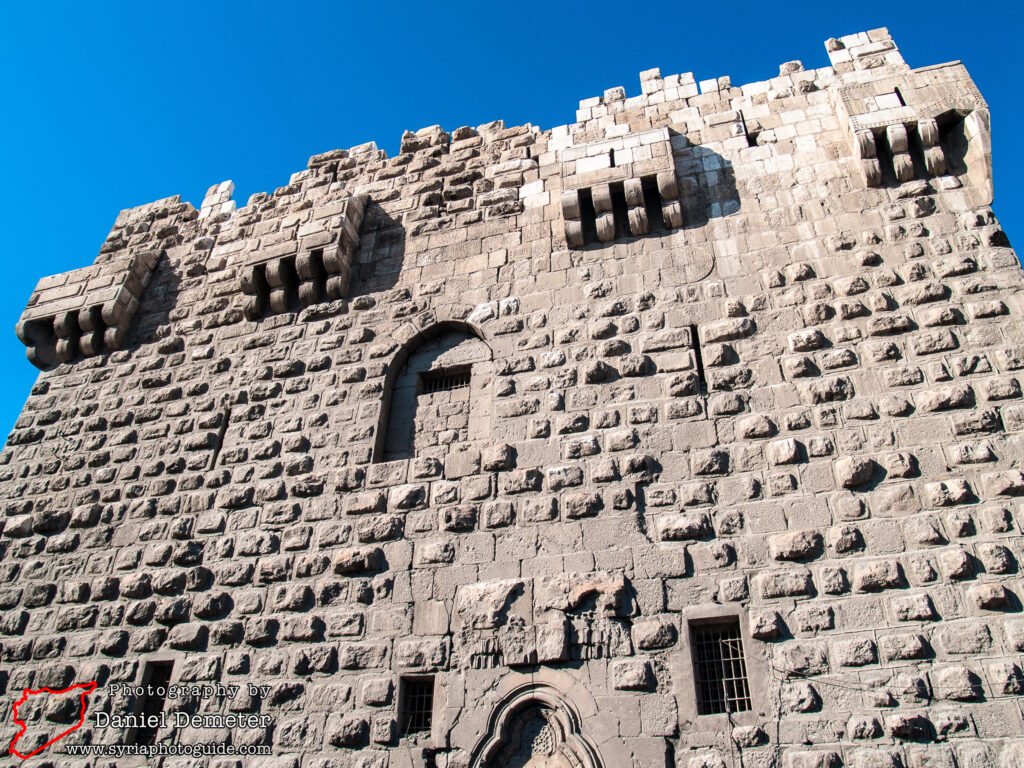
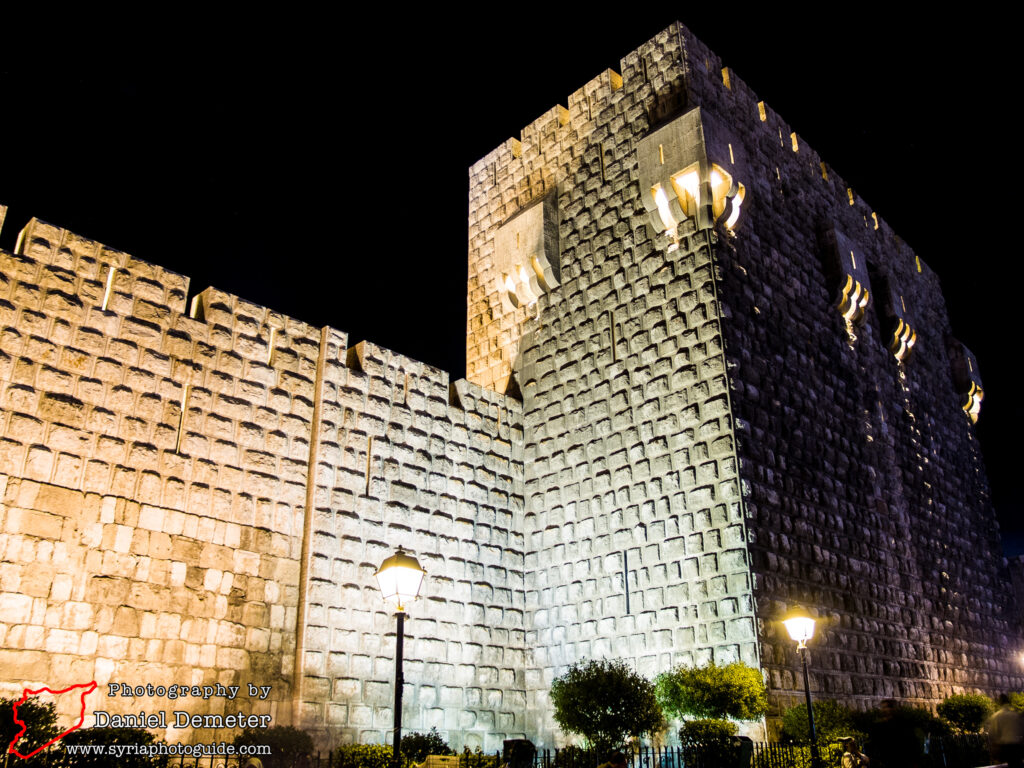
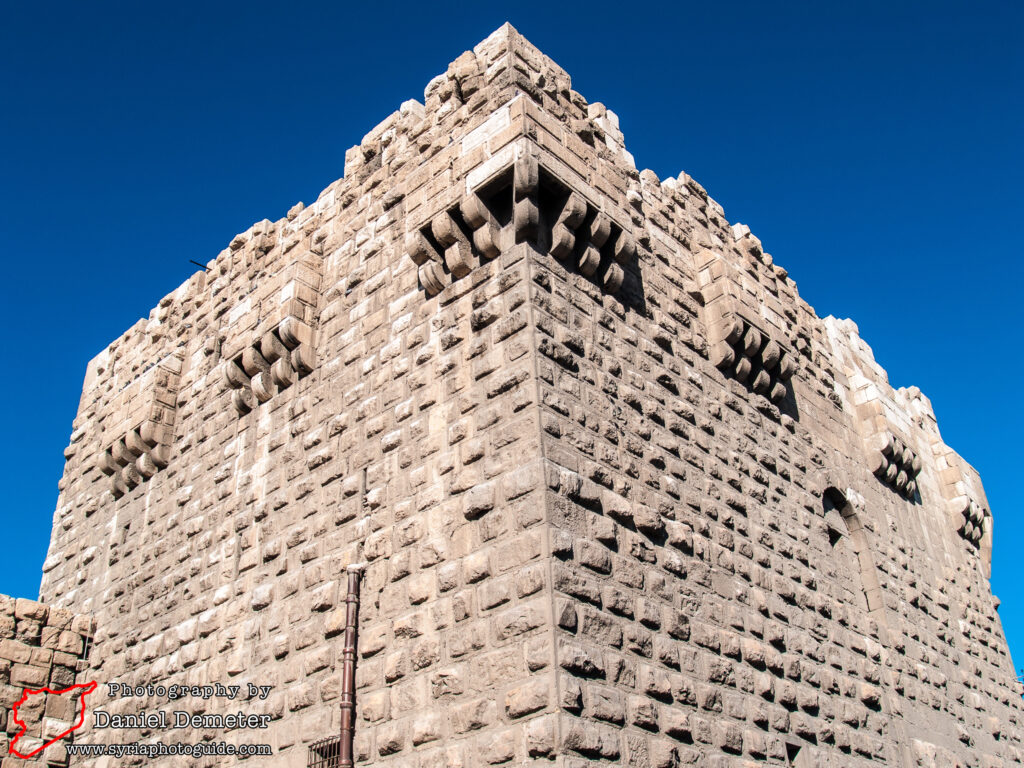
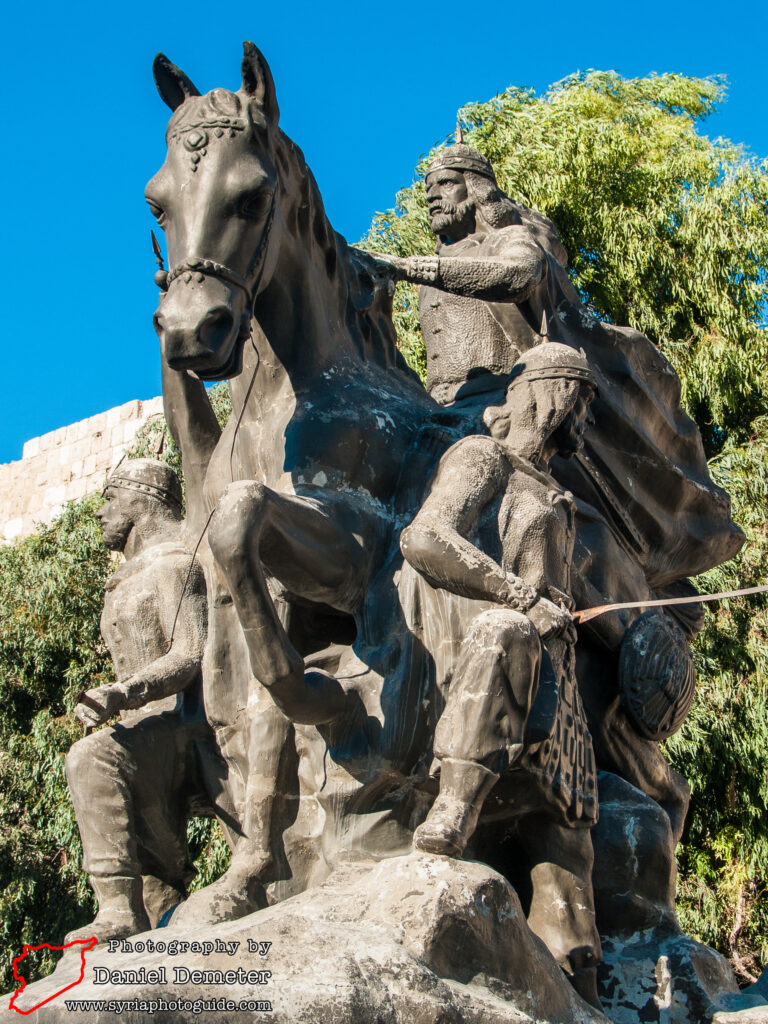
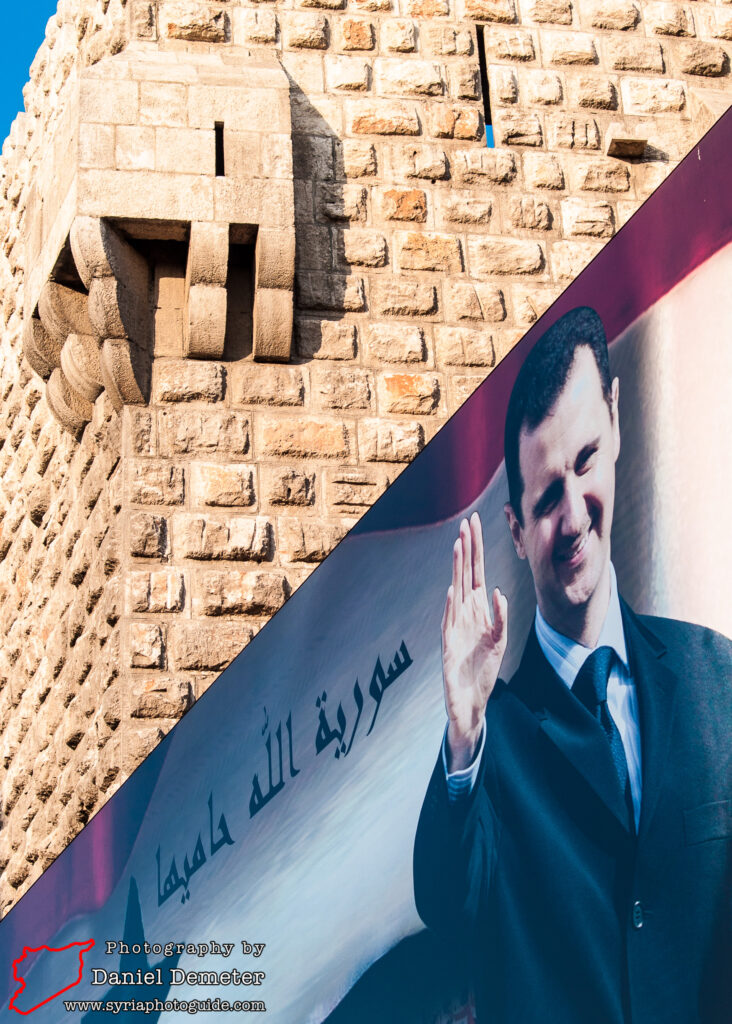
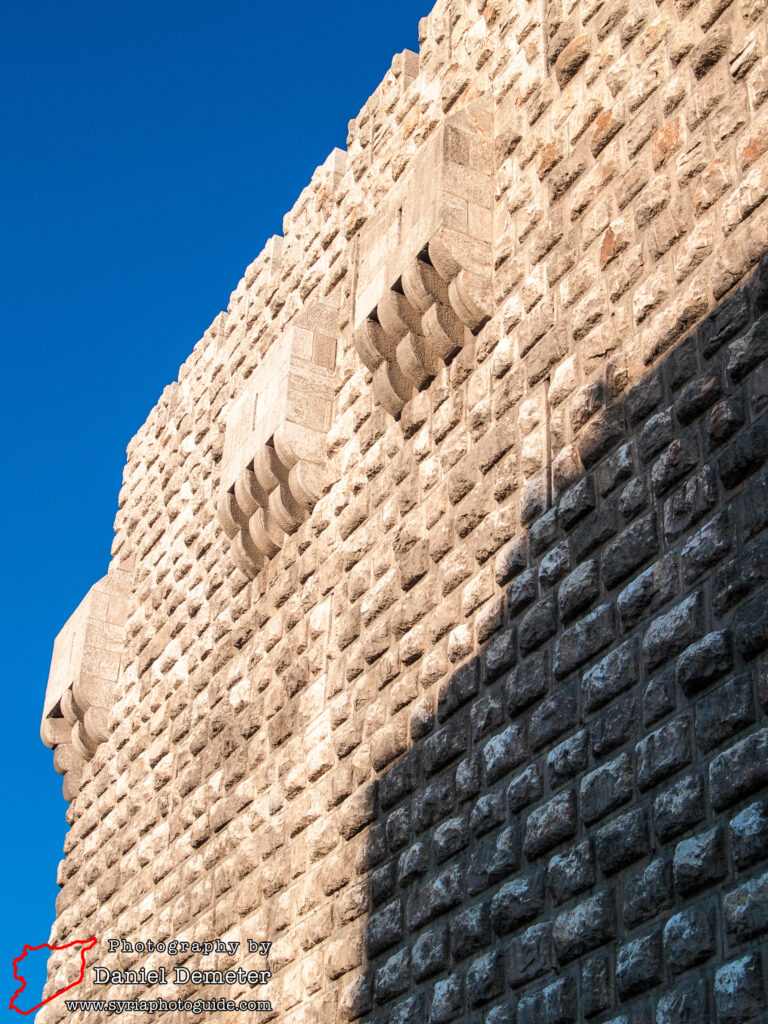
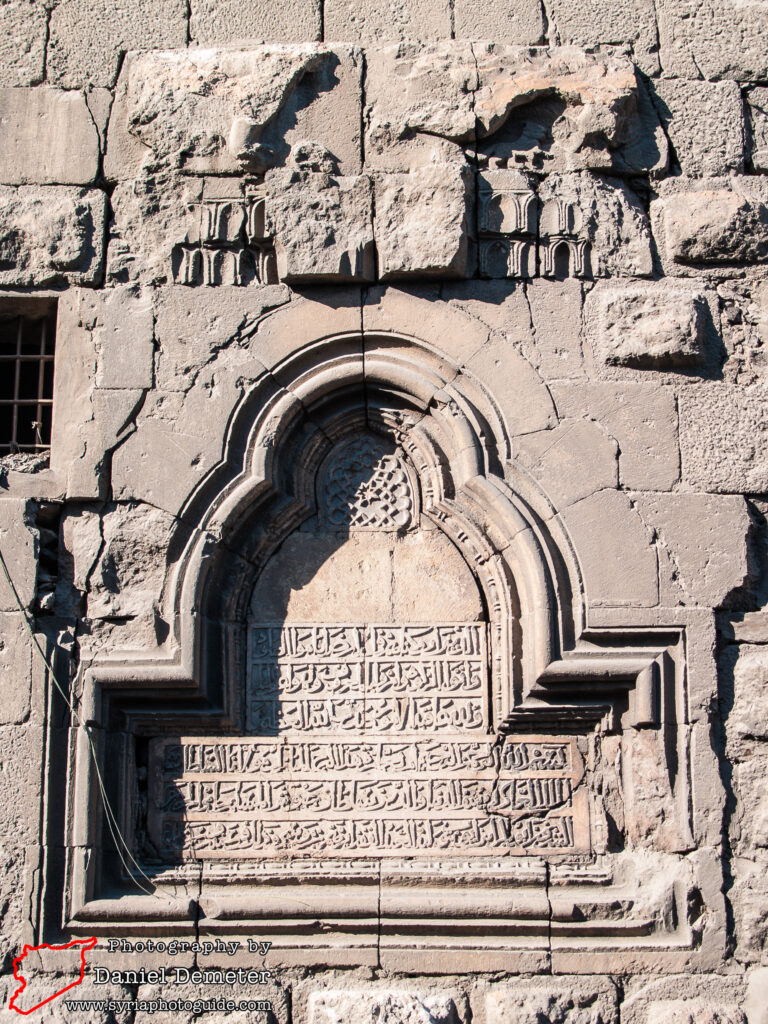
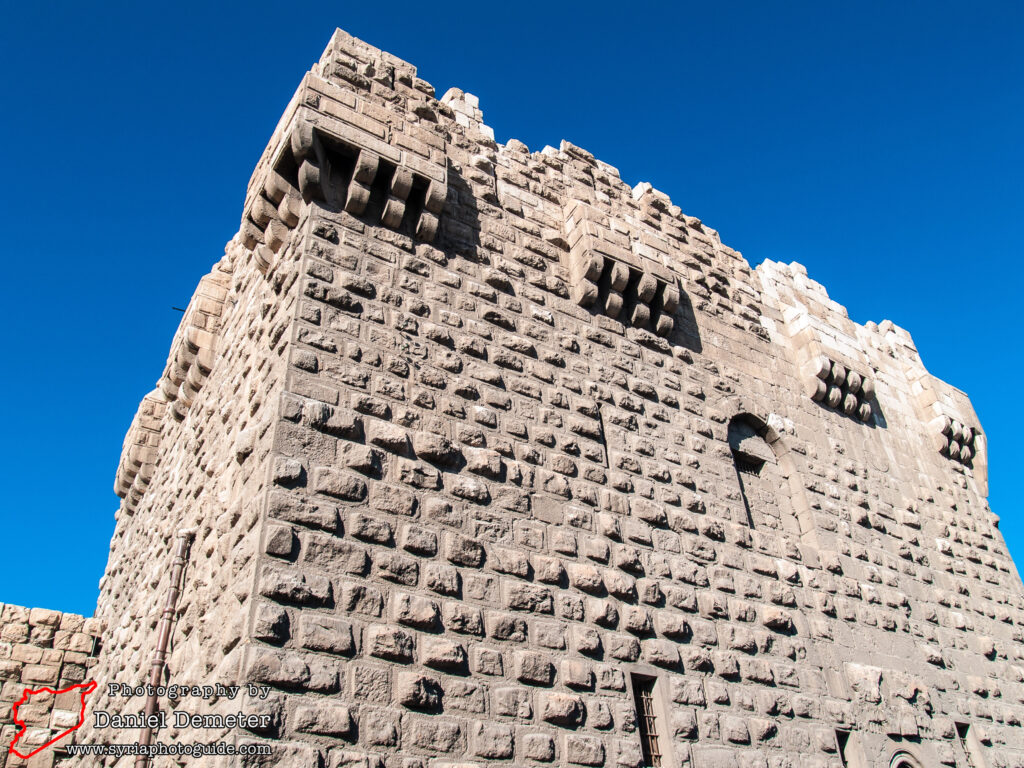
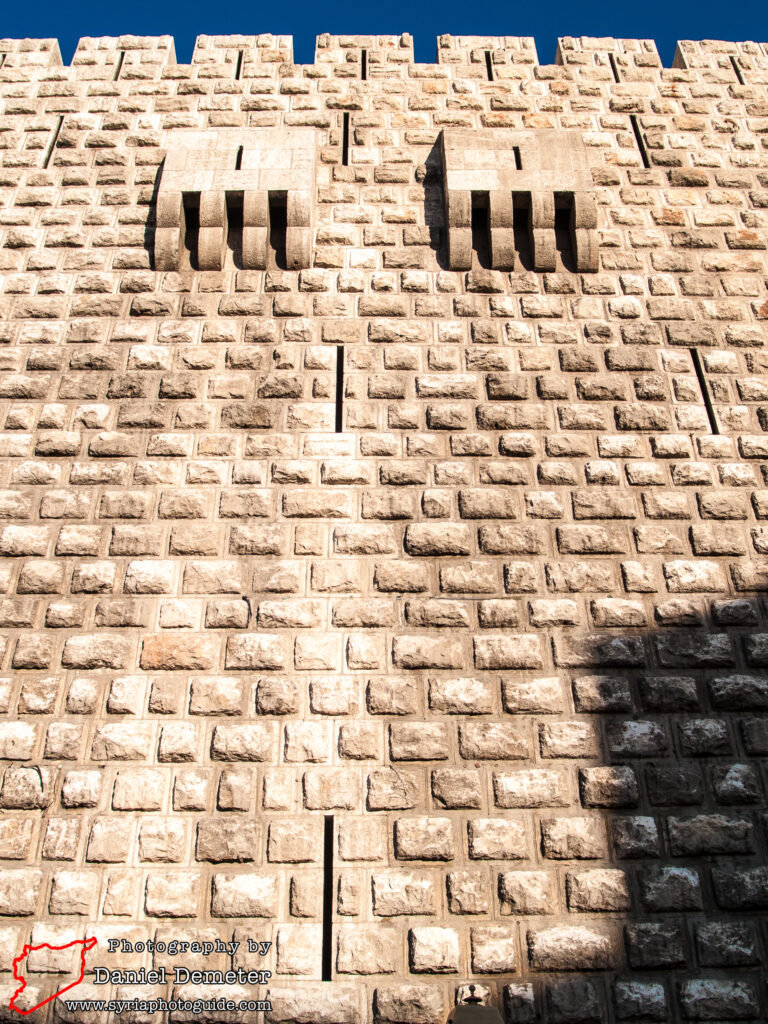

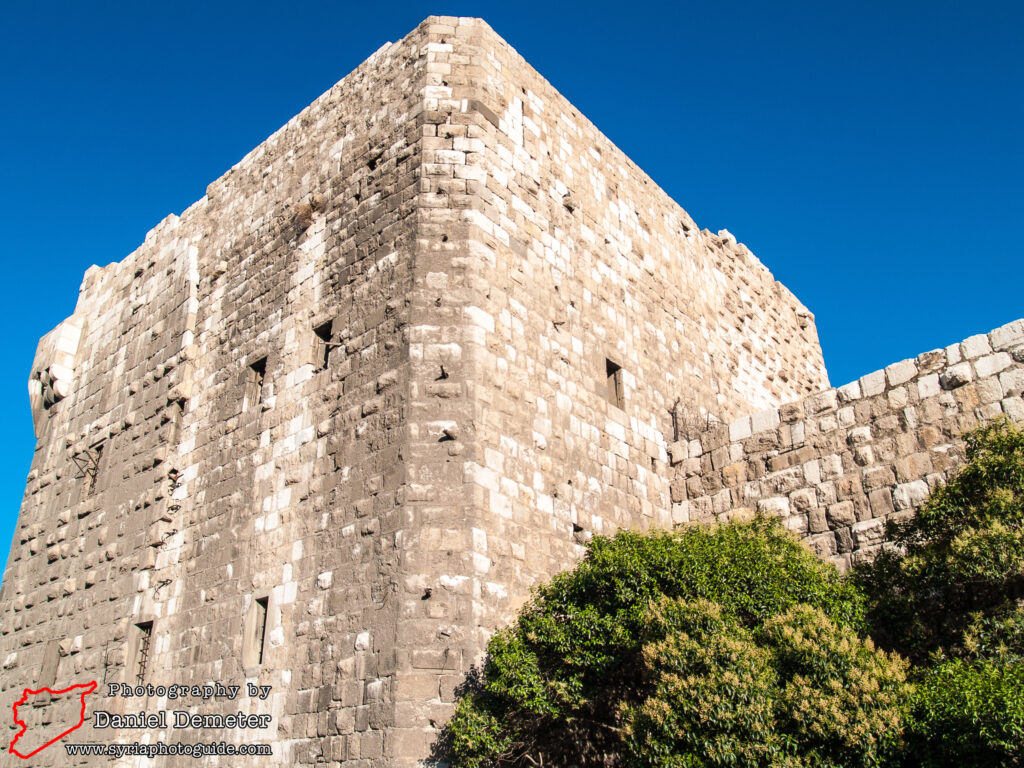
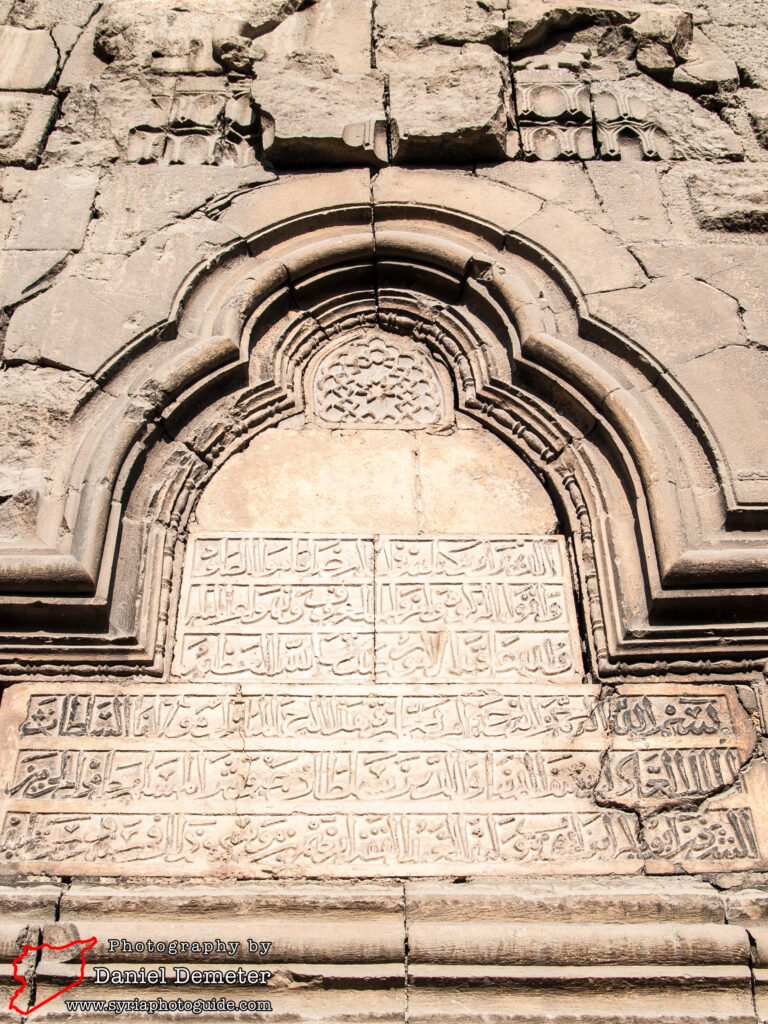
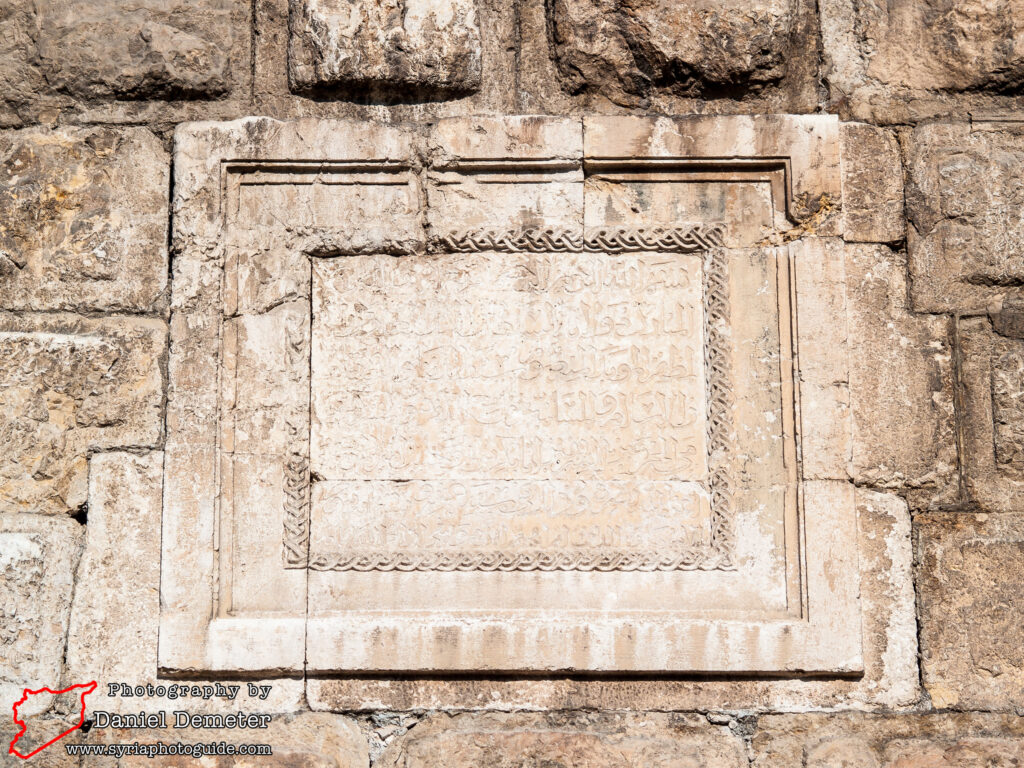
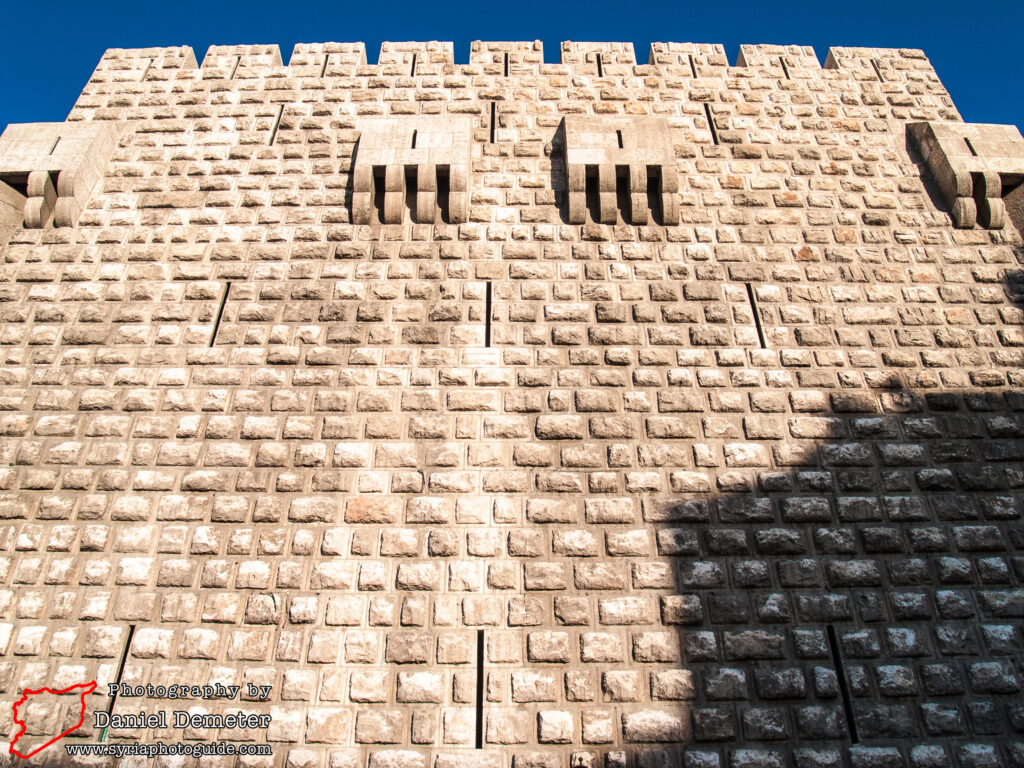
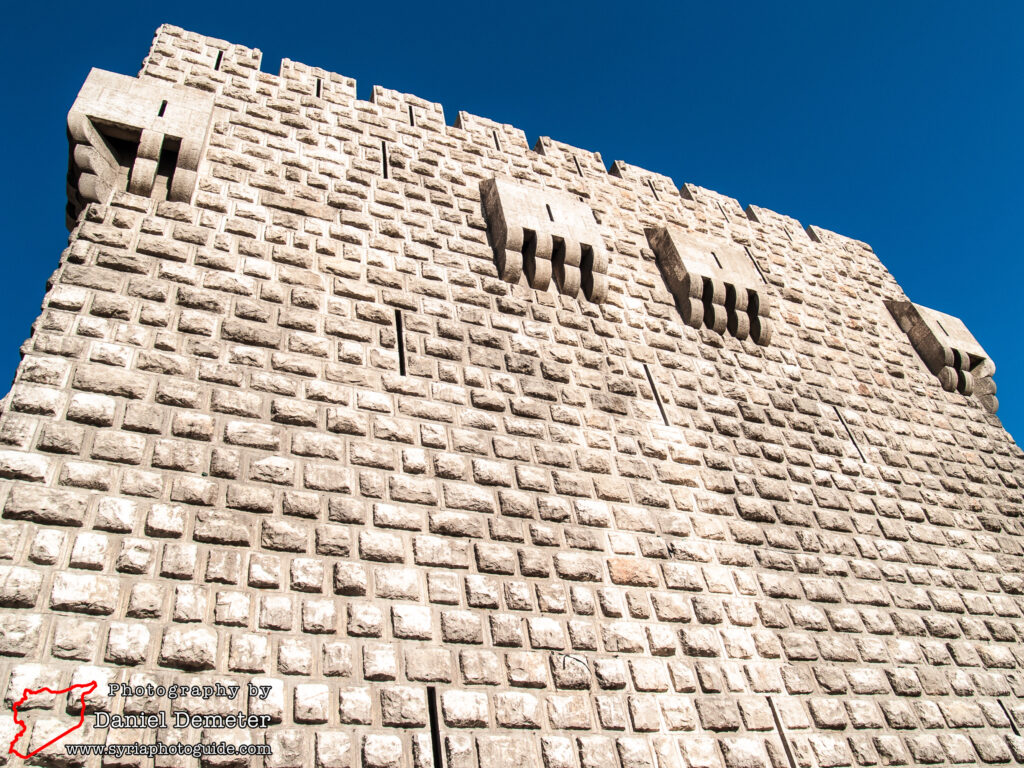

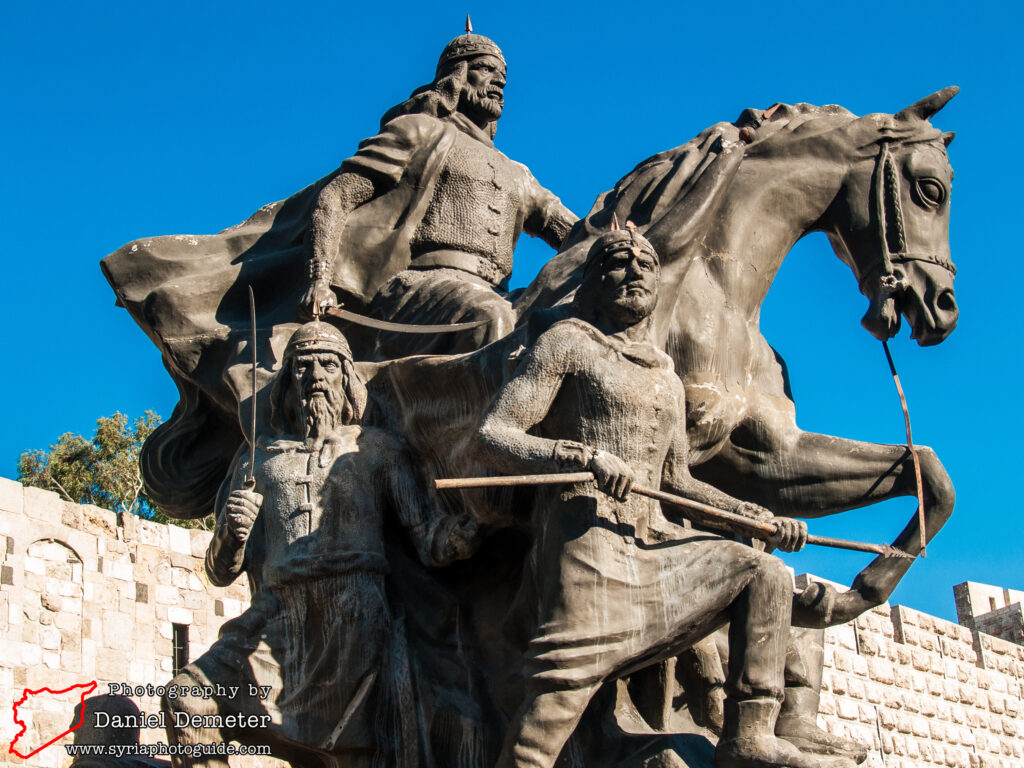
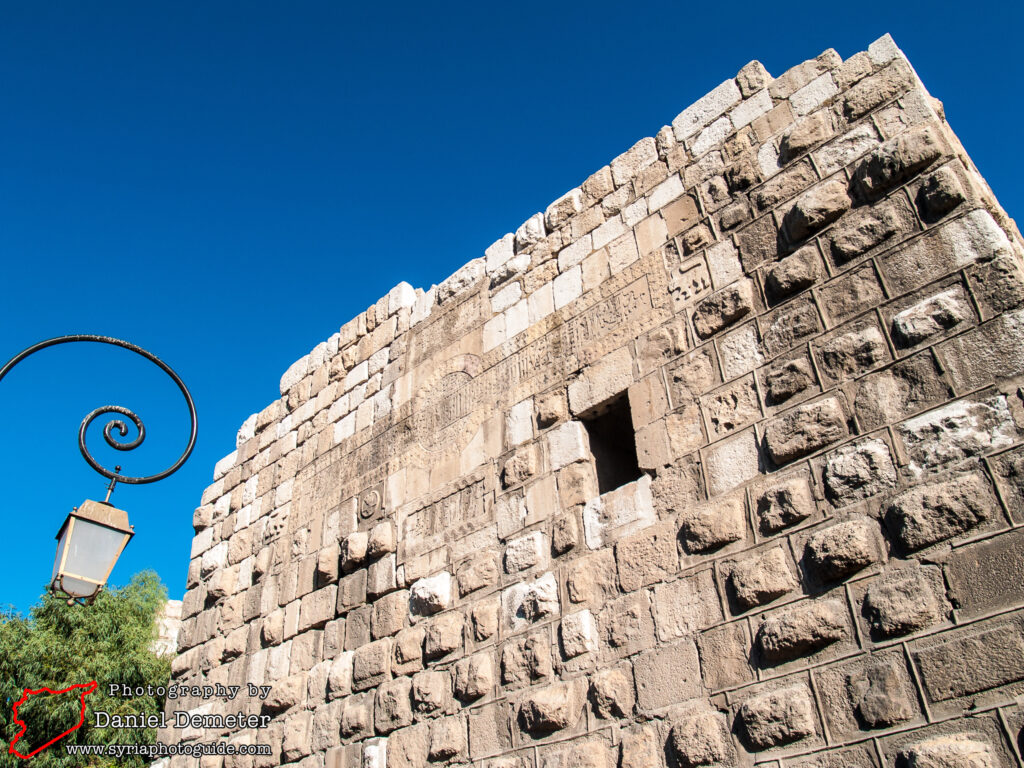
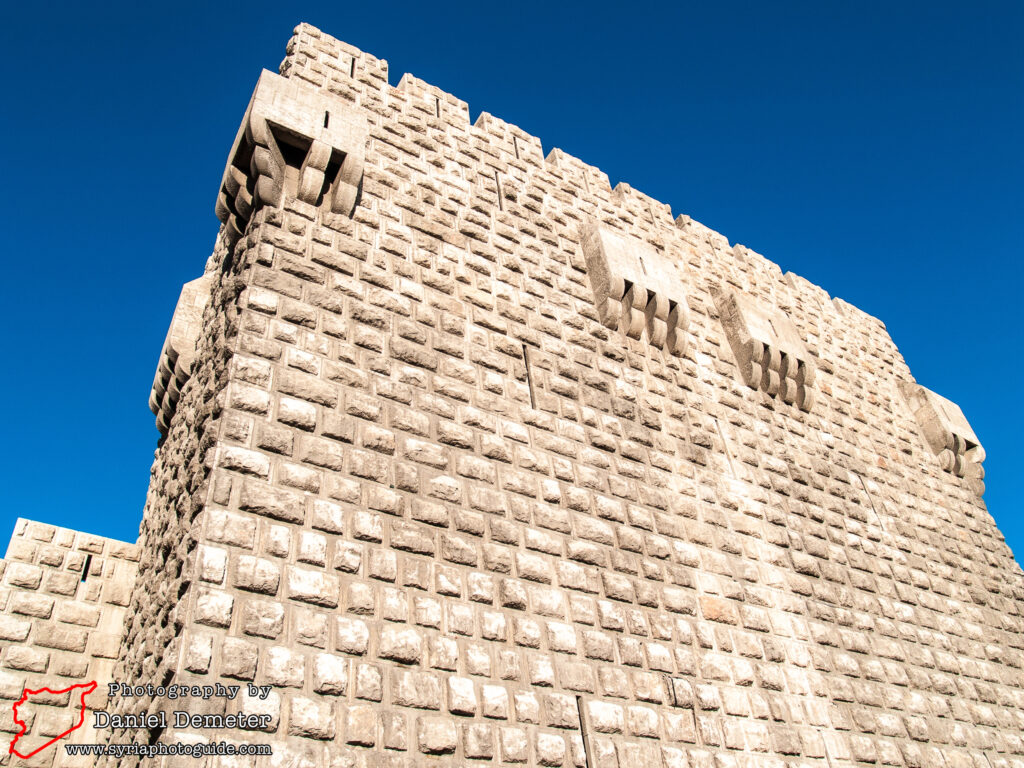
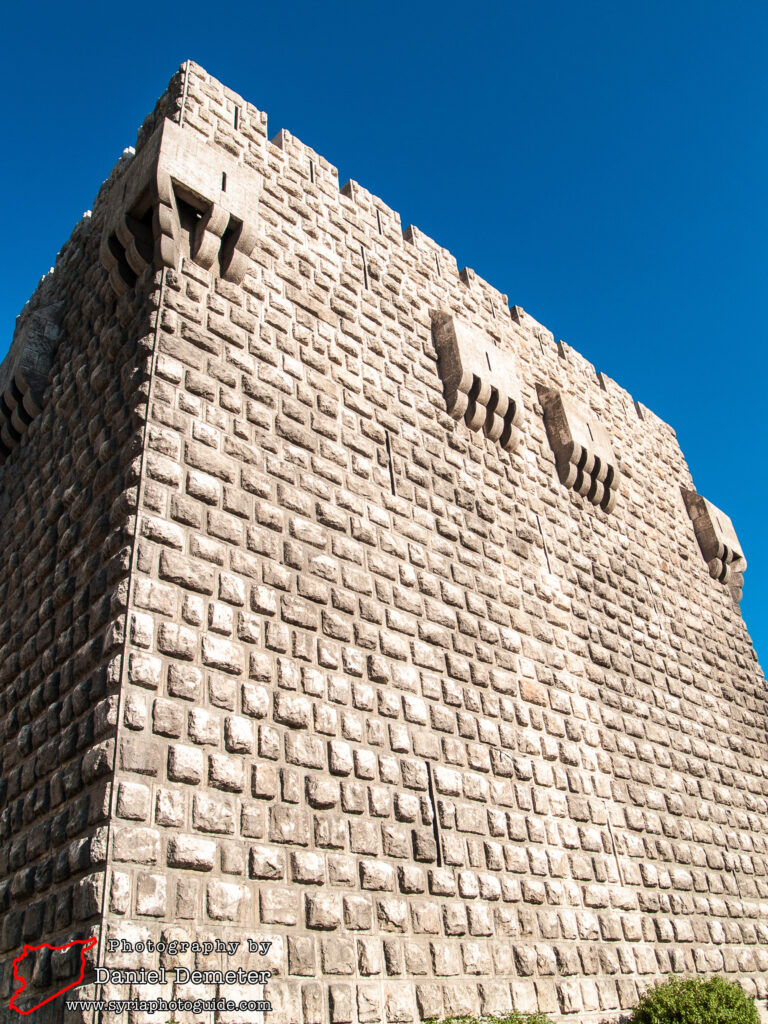
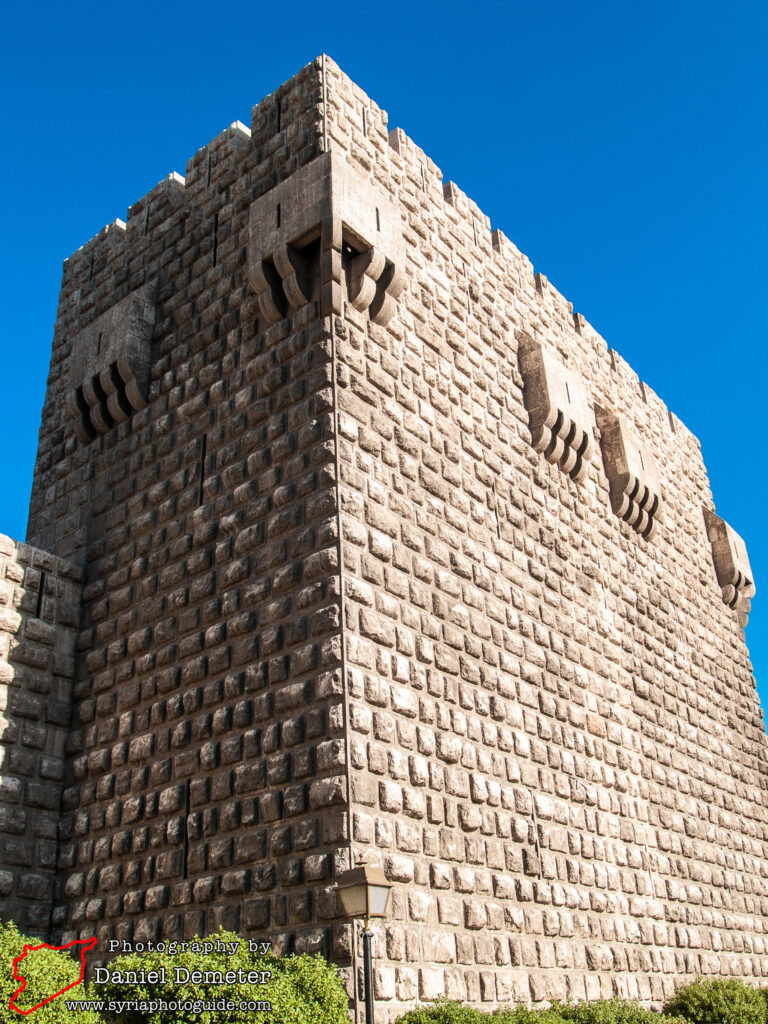
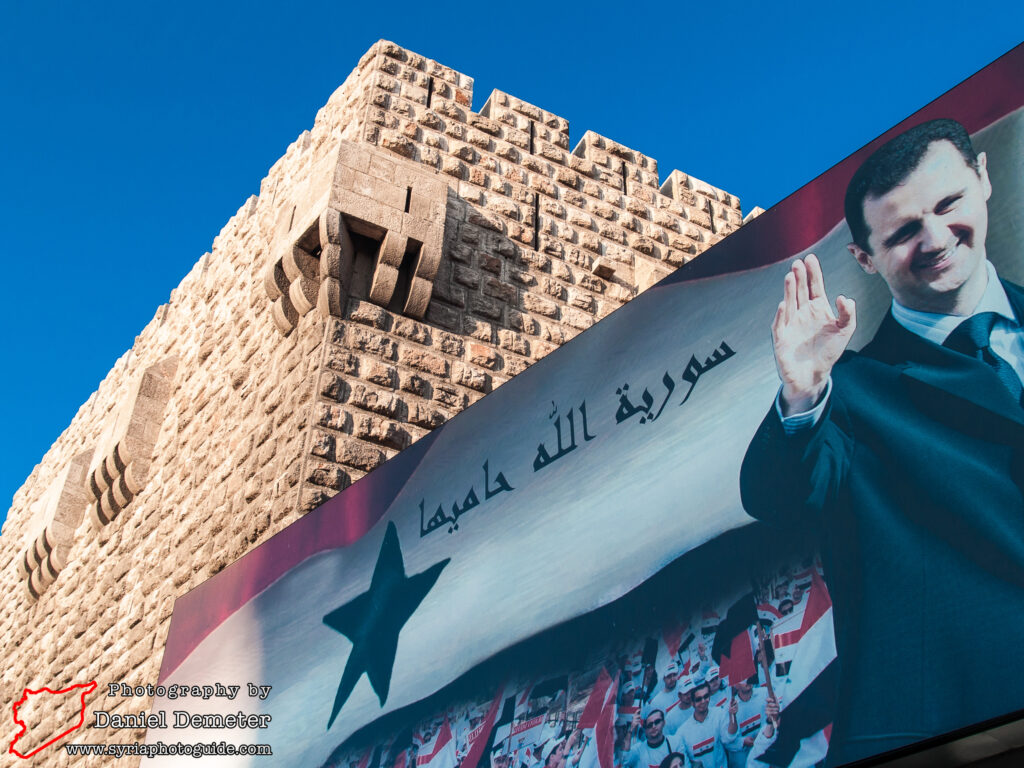
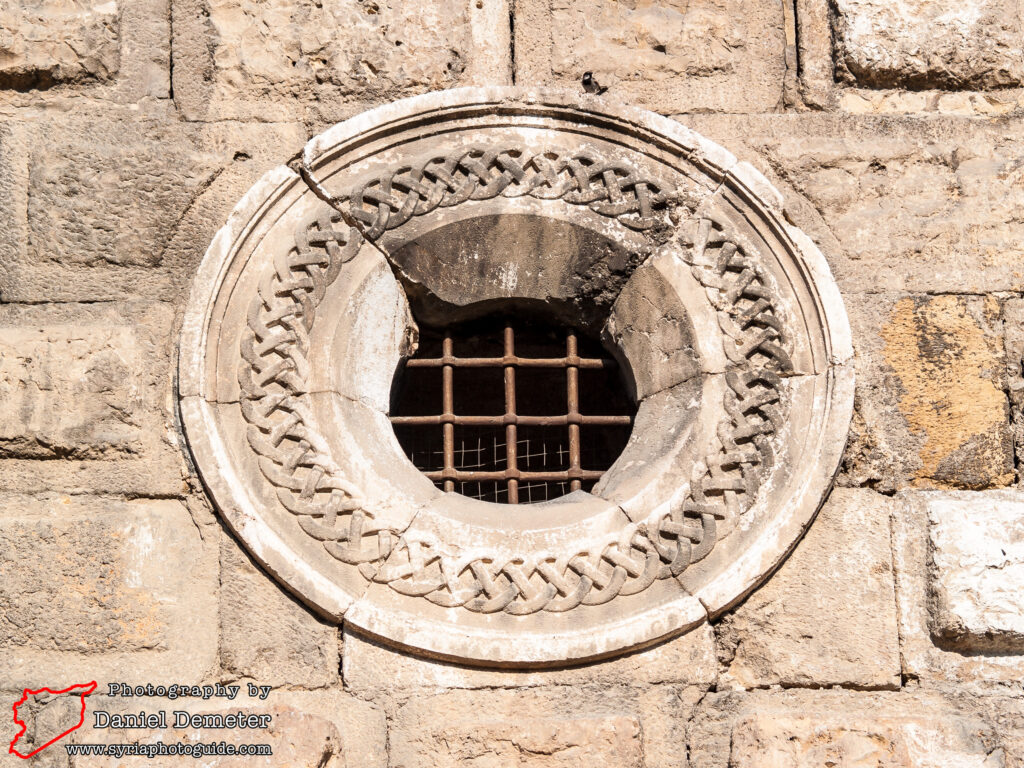
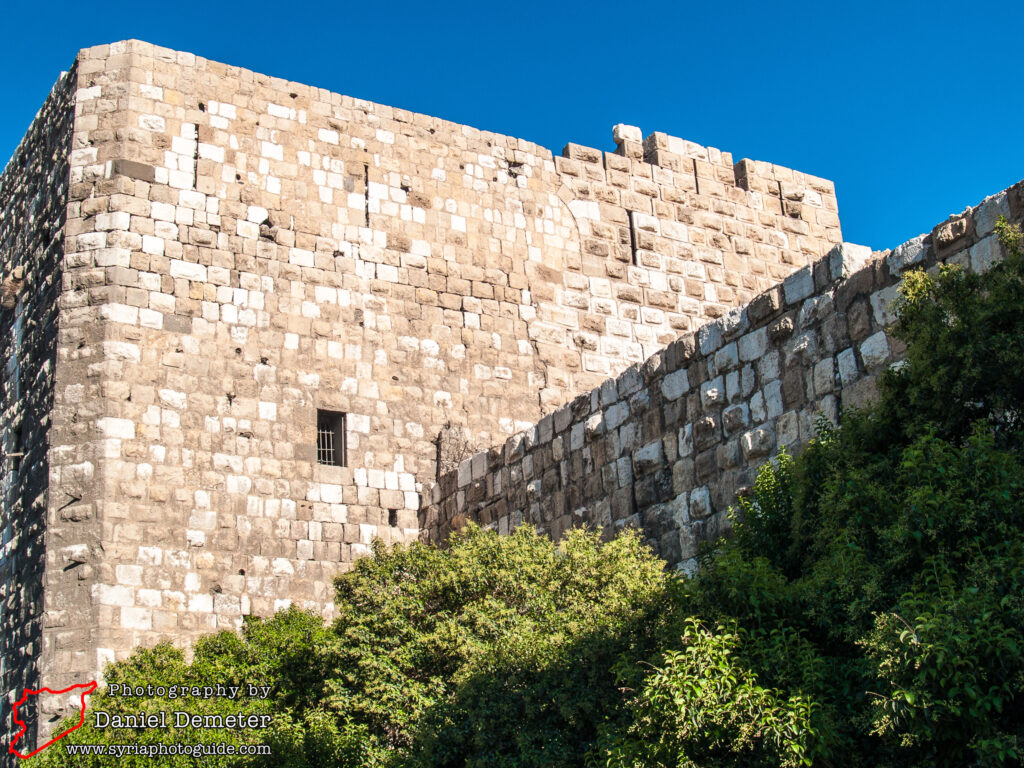
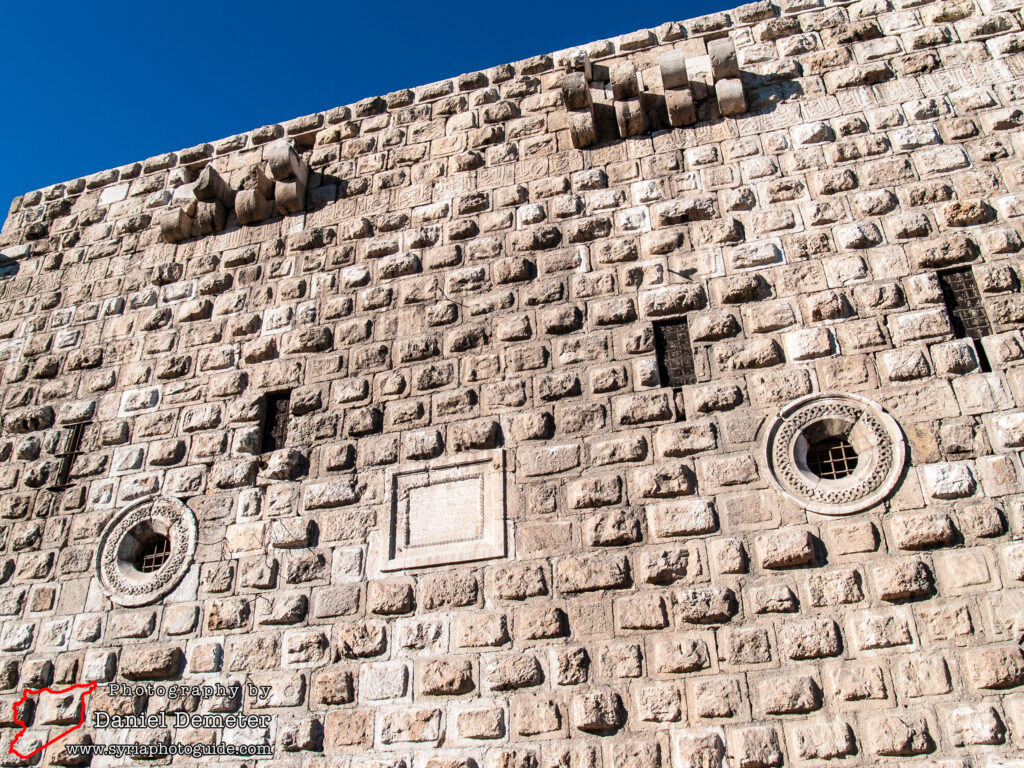
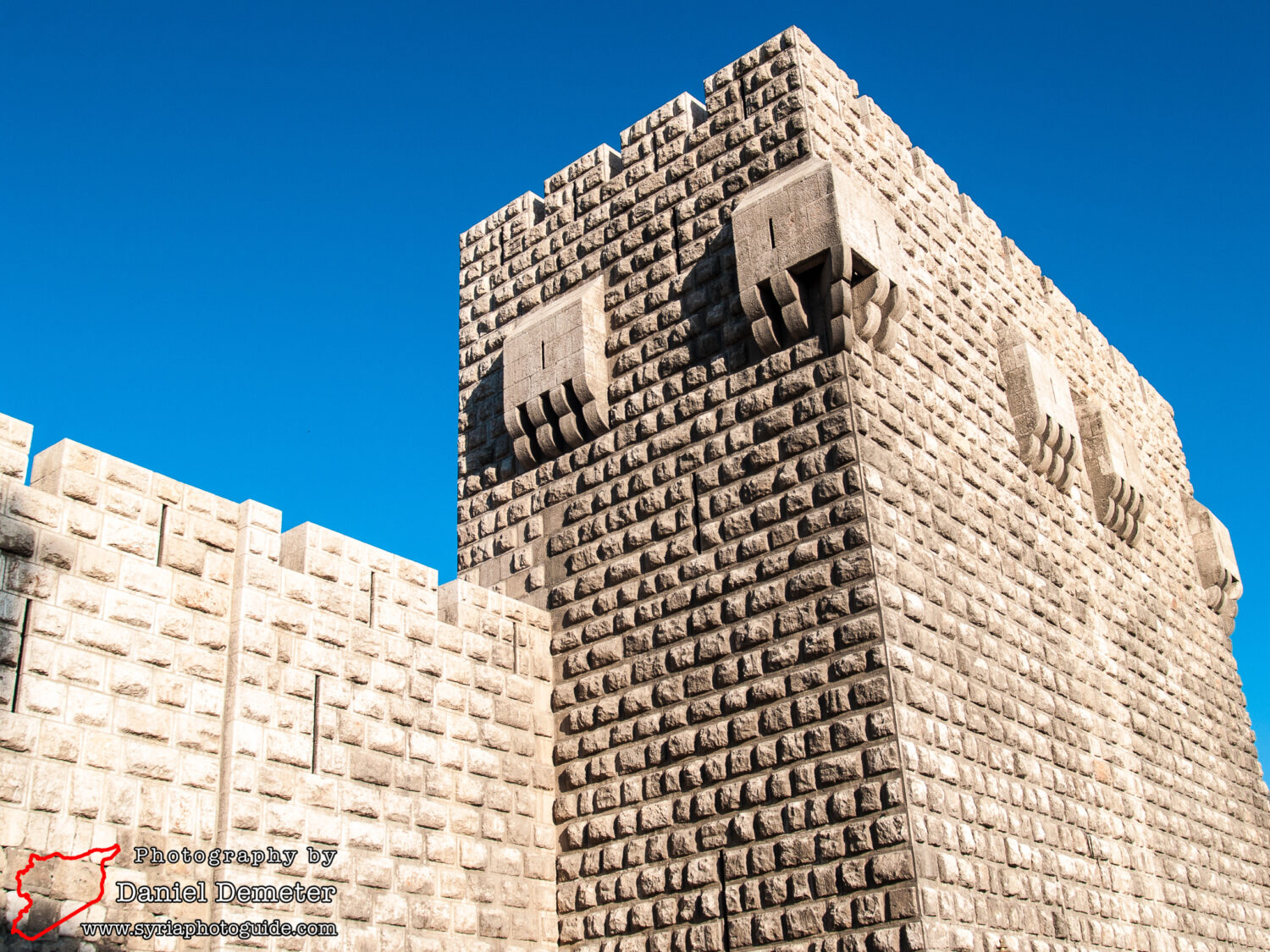
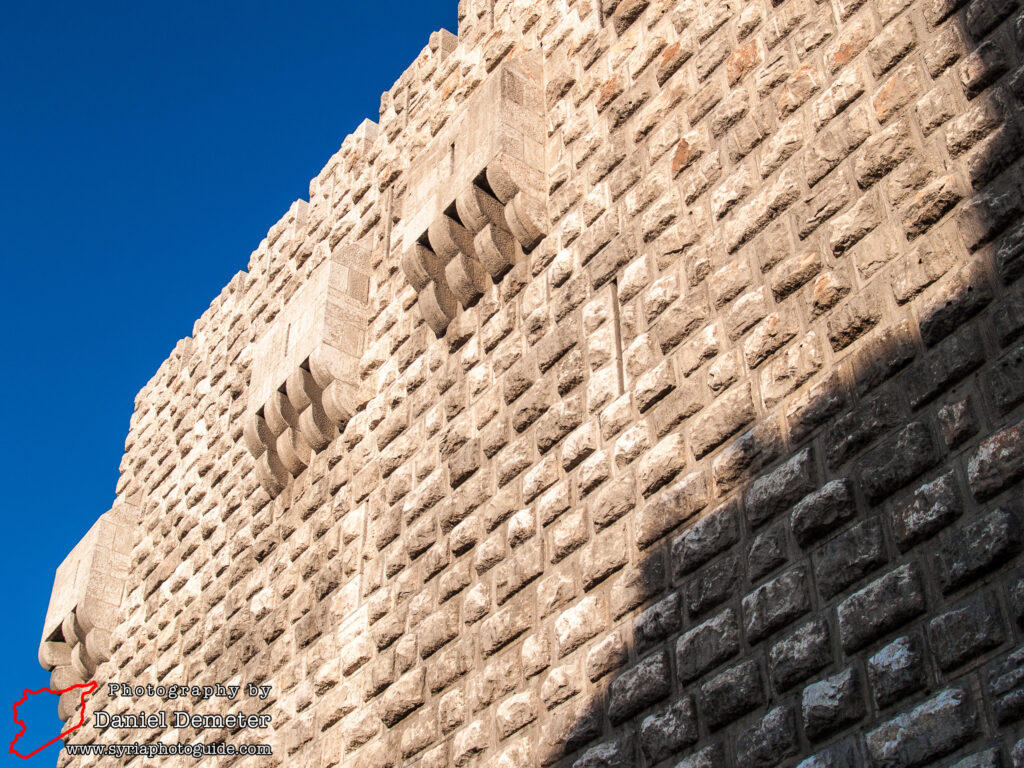
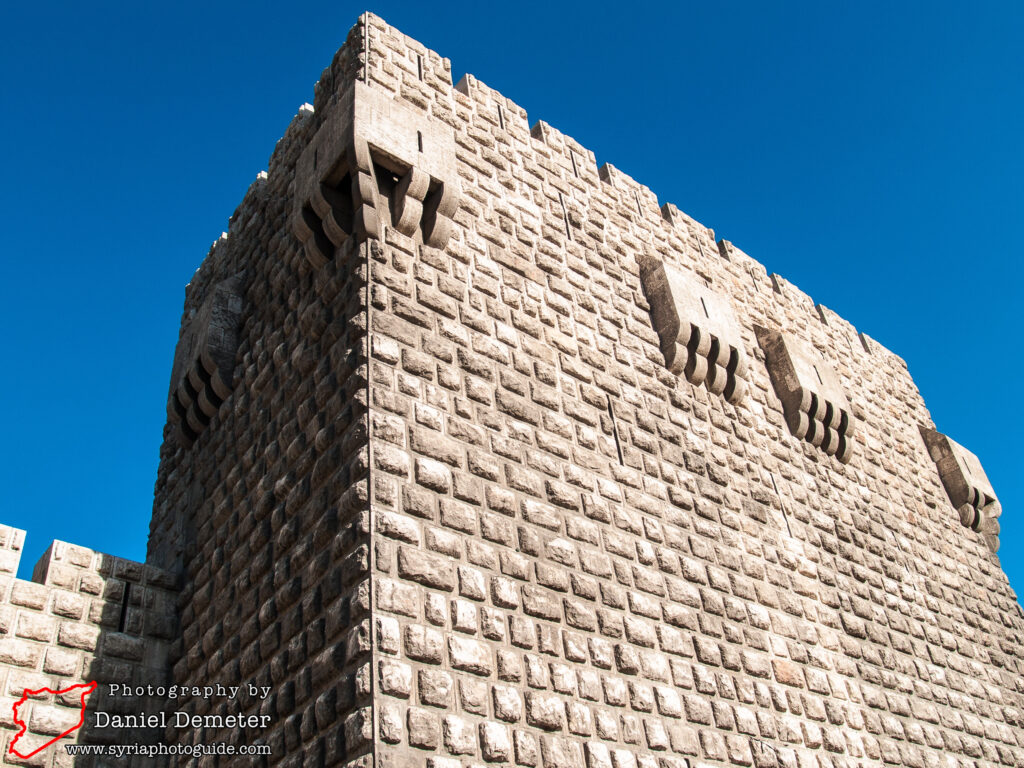
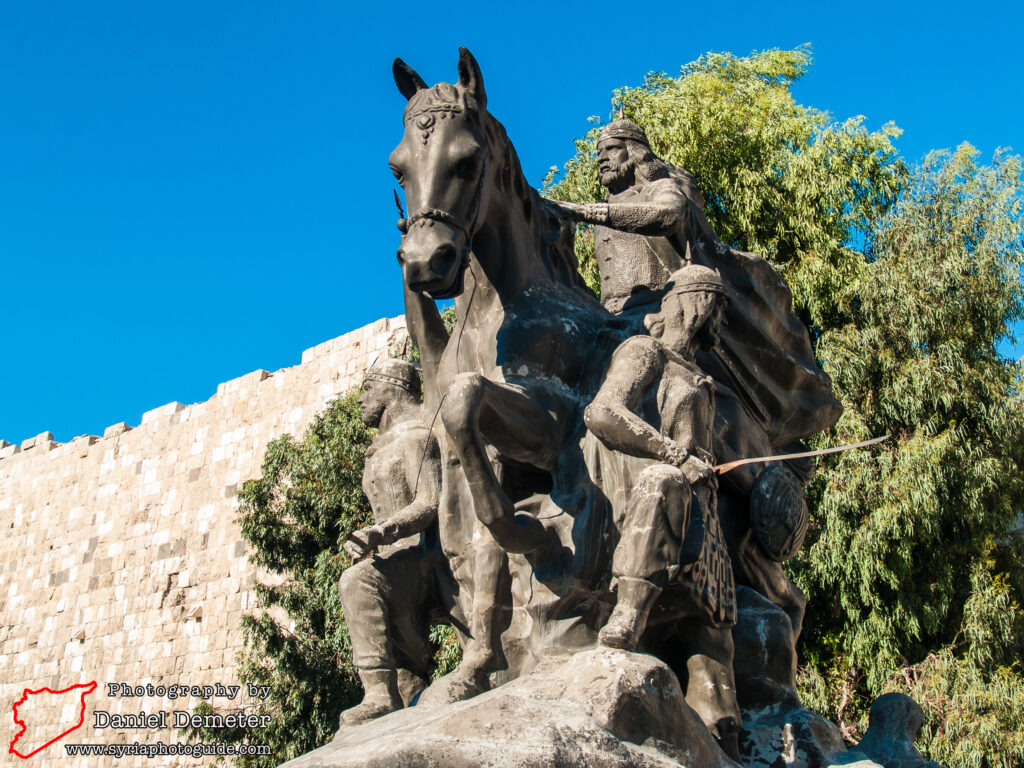
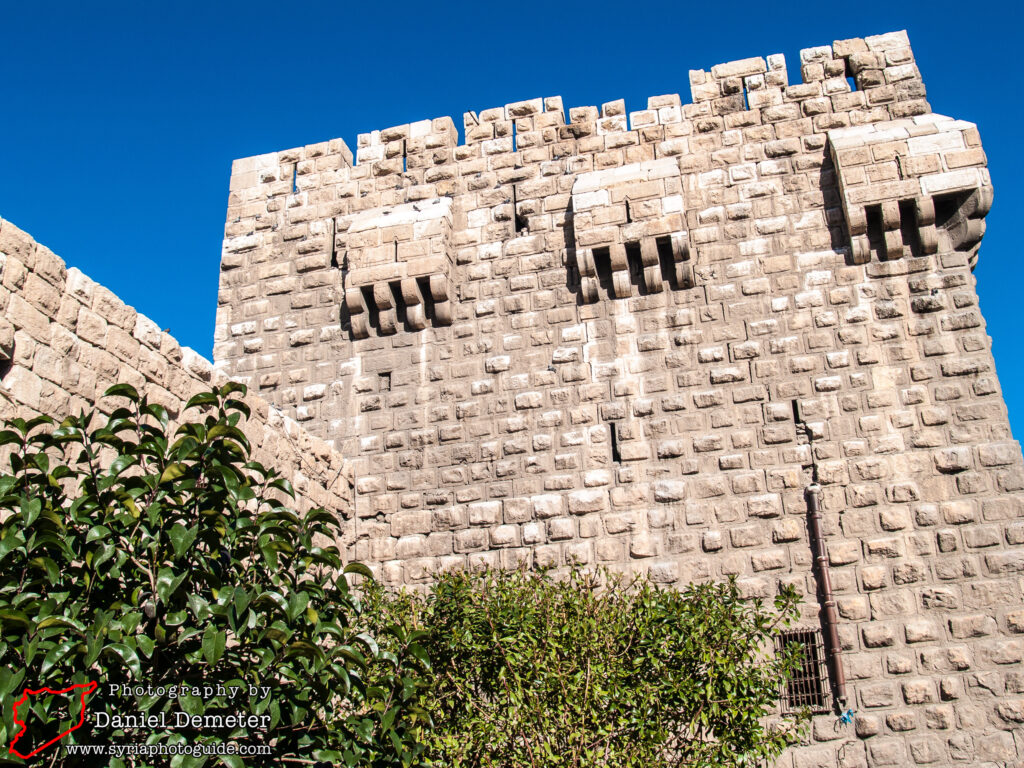
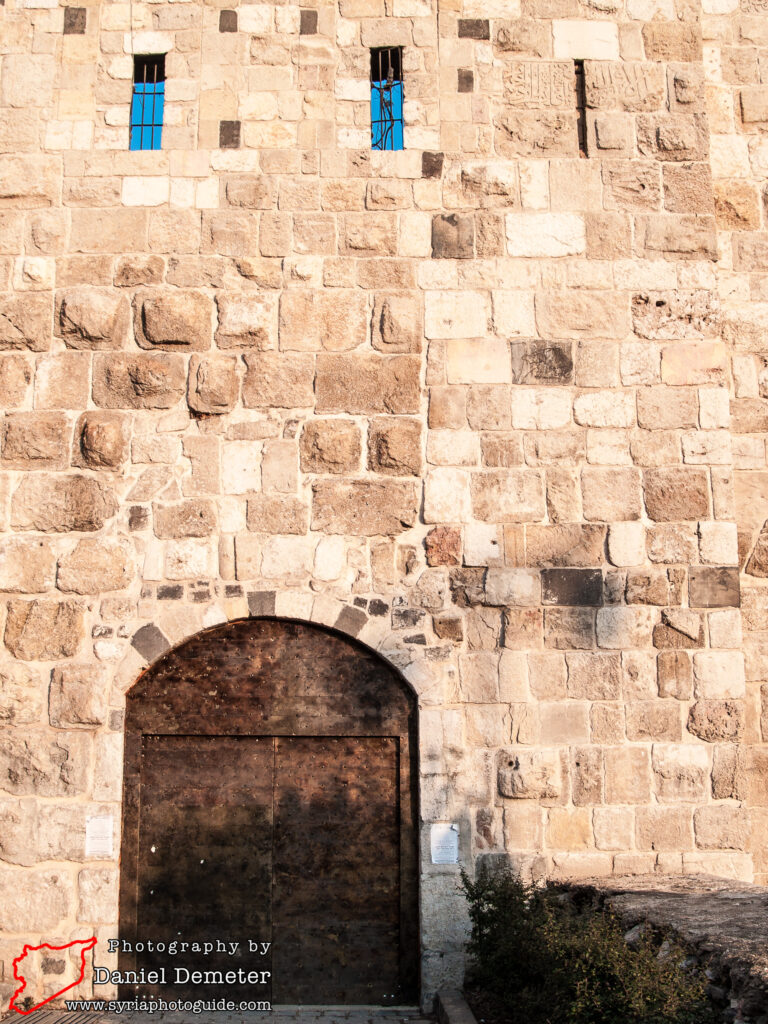
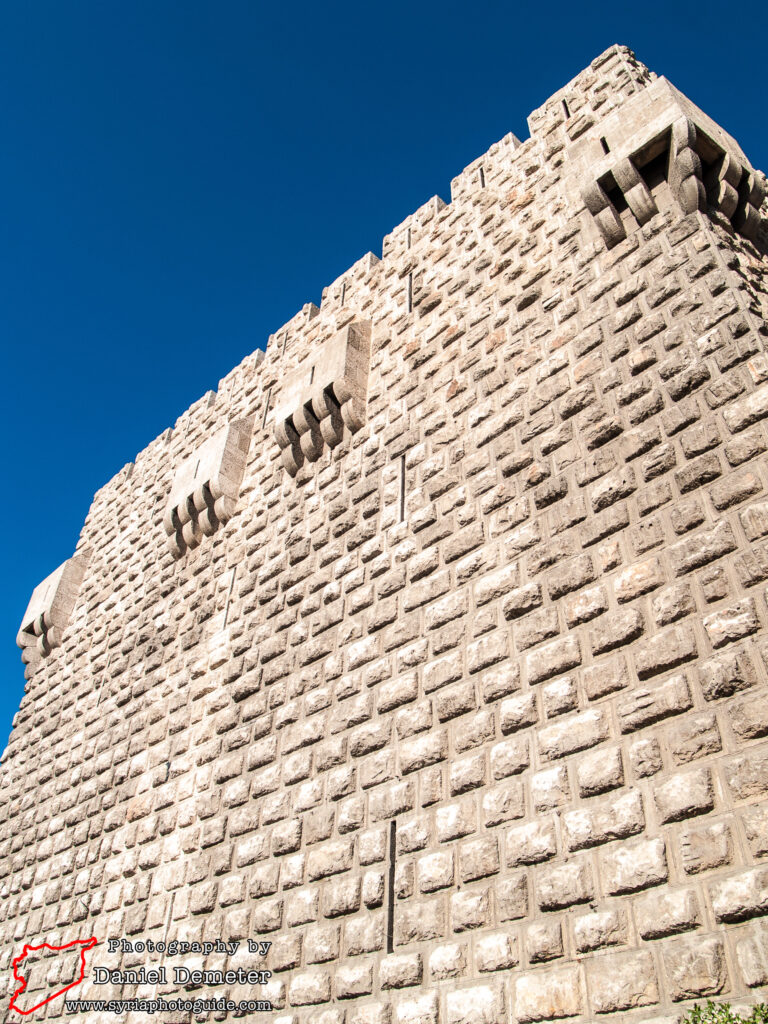
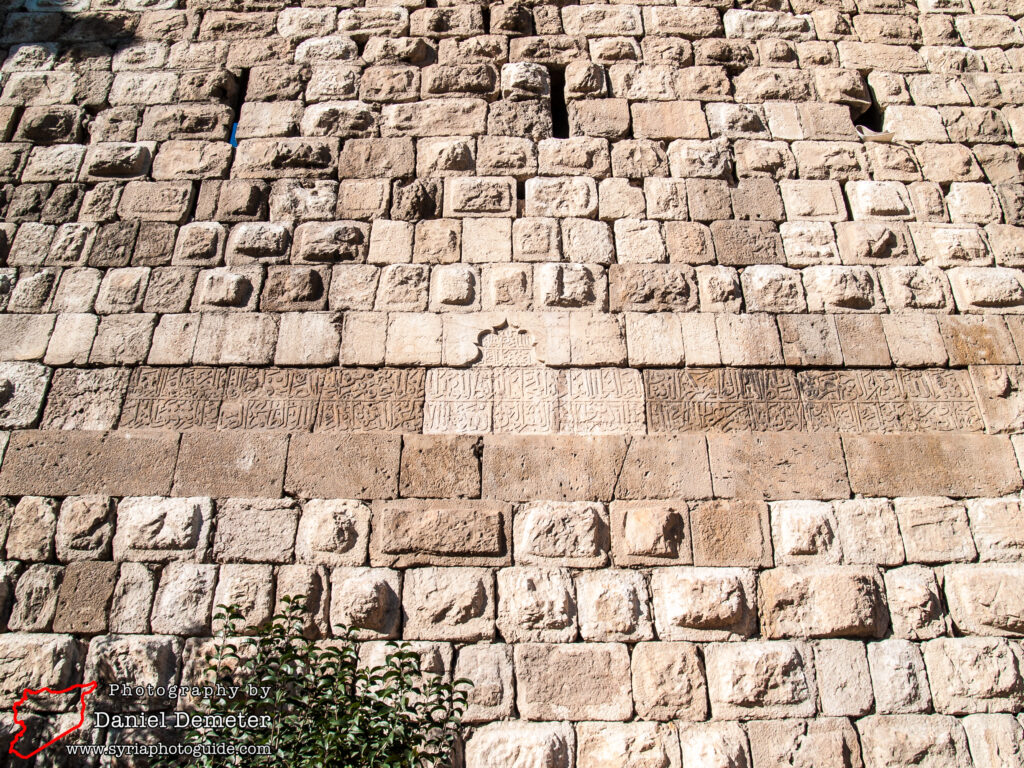

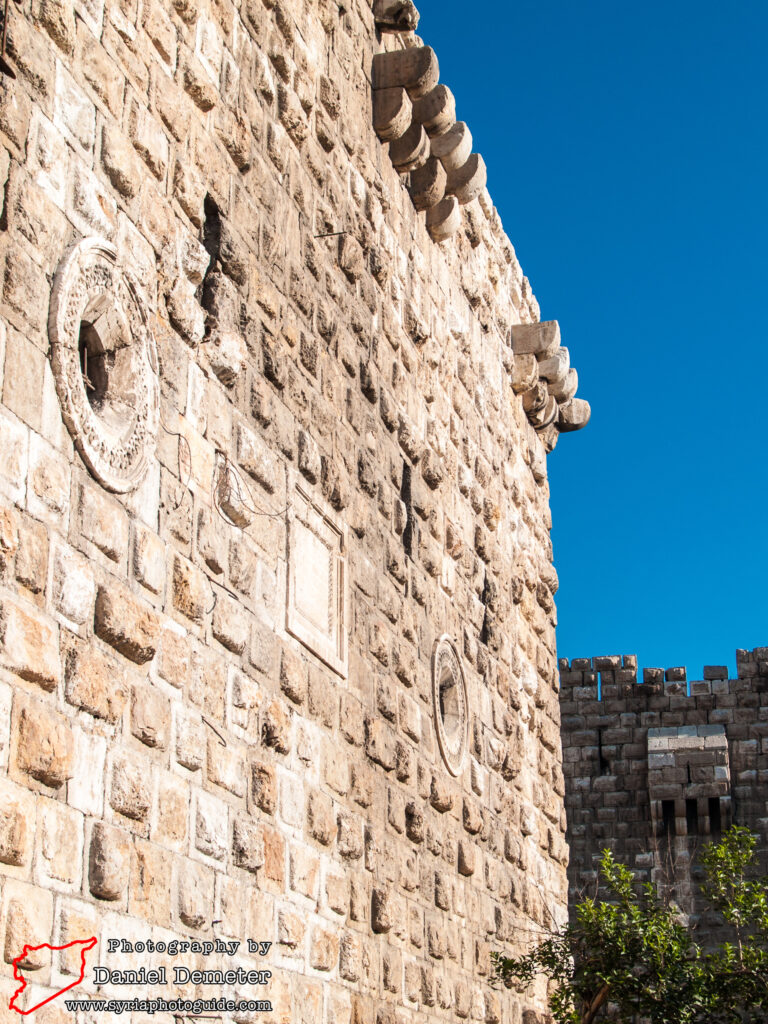
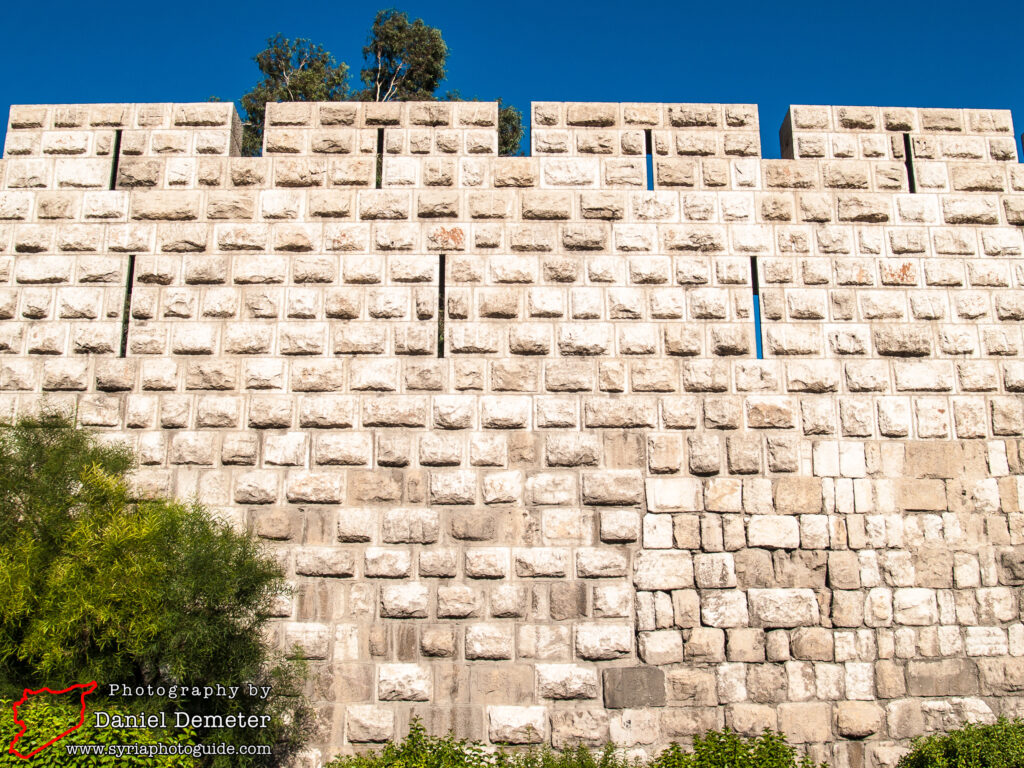
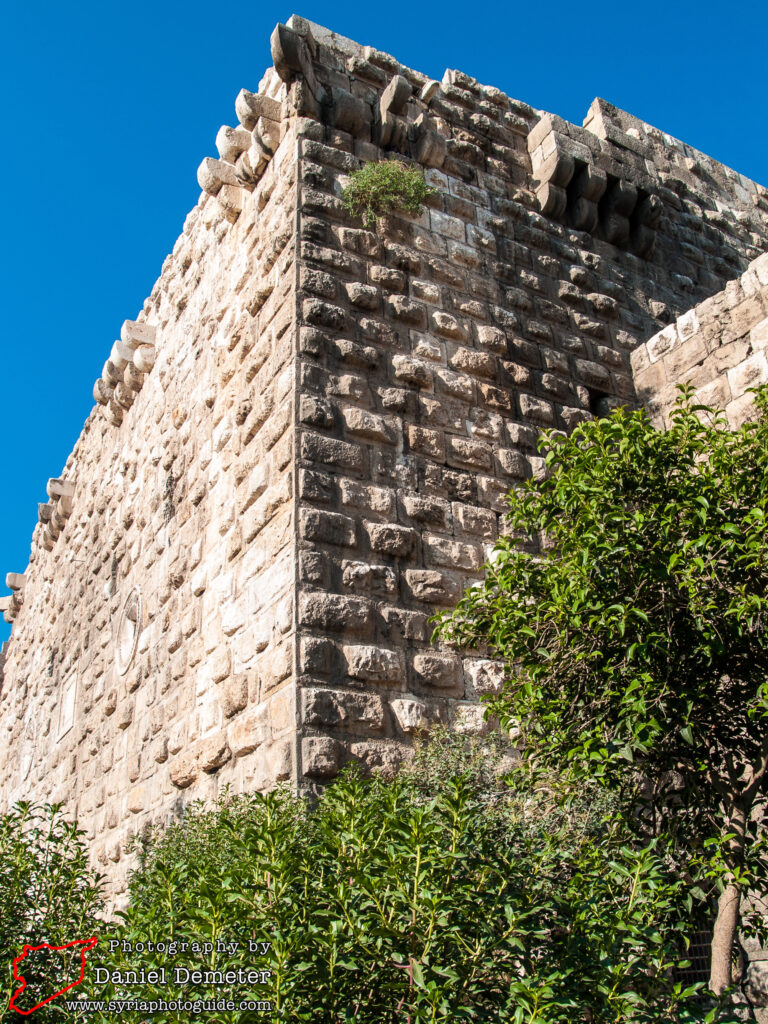
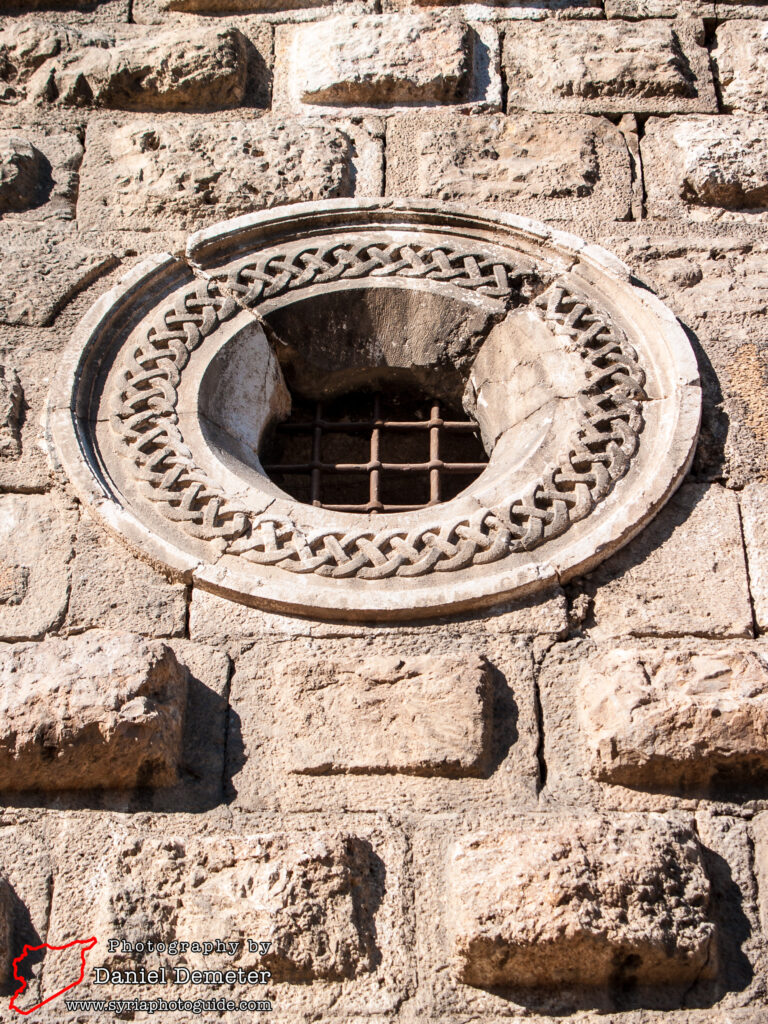
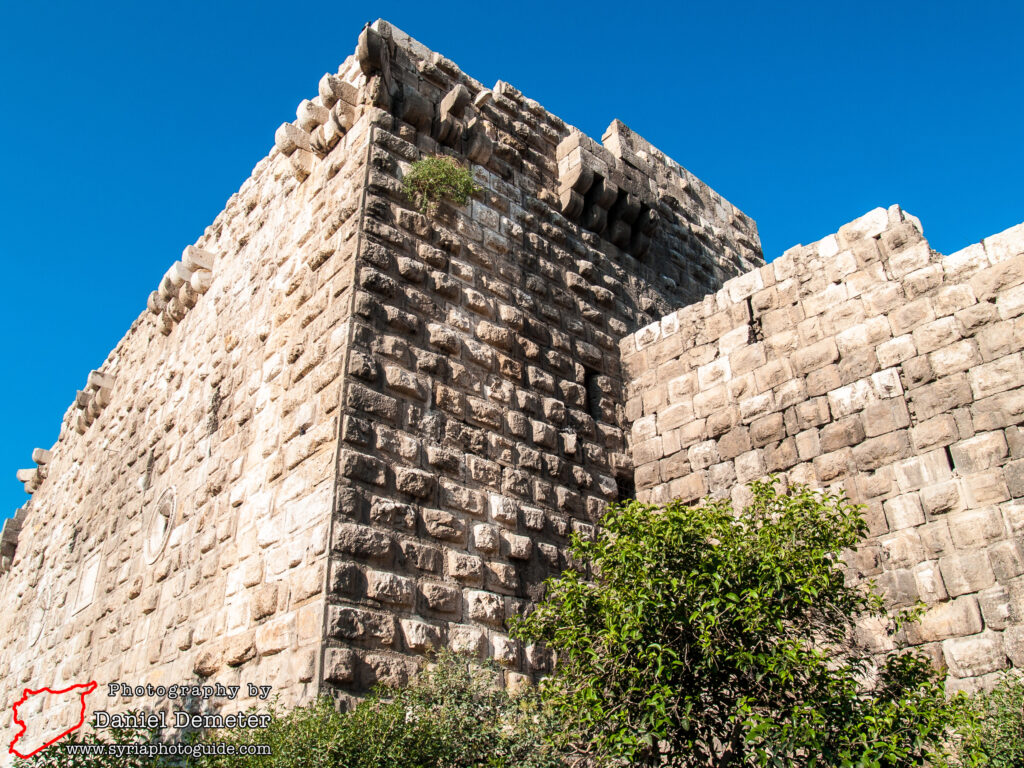
Getting There: The Damascus Citadel (قلعة دمشق) is located in the northwest corner of the old city of Damascus (دمشق), located between the Barada River (نهر بردى) to the north and Souq al-Hamidiyeh (سوق الحميدية) to the south.
Coordinates: 33°30’42.00″N / 36°18’08.00″E
Transliteration Variants: Qalaat Damashq
Rating: 6 / 10
